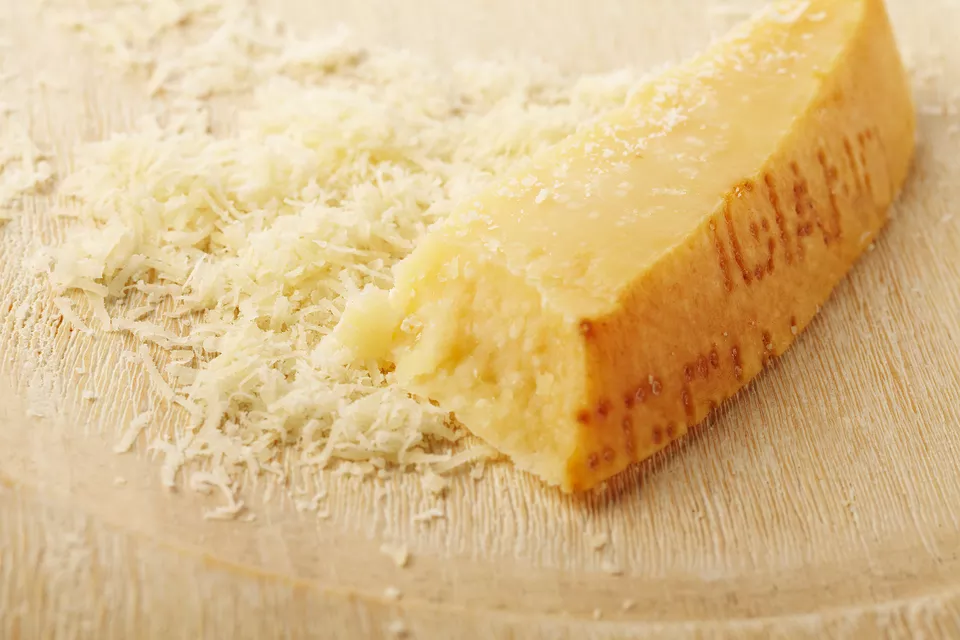Specifically, Parmiagganio Reggiano.
So, where do we get started? While you might be familiar with the name (and taste), I don’t think I knew that Parmigiano-Reggiano is produced exclusively in the provinces of Parma, Reggio Emilia, Modena, Bologna to the left of the Reno river, and Mantua to the right of the Po river. And why is this important? Basically, these areas host the farms where the cattle are fed on locally grown forage, compliant with norms of a strict specification that bans the use of silage, fermented feeds, and animal flour.
So, what about the process to make Parmiagganio Reggiano? The milk from the morning and the previous evening is poured into the traditional upturned bell-shaped copper vats. It takes about 550 liters of milk to produce each wheel of Parmigiano Reggiano. The milk slowly and naturally coagulates with the addition of rennet and a whey starter, rich in starter cultures, from the previous day’s processing. The curd which forms is then broken down by the master cheese-maker into tiny granules using a traditional tool called a spino. This is where fire comes into the picture, in a cooking process that reaches 55 degrees centigrade, after which the cheesy granules sink to the bottom of the cauldron, forming a single mass. After about fifty minutes, the cheese-maker removes the cheese mass, which will give rise to two twin wheels. They then cut the cheese into two parts and wrap in a linen cloth. Finally, the cheese is then placed in a mold, which will give it its final shape.
Did you know?
- A casein plate with a unique and sequential alphanumeric code is applied to each wheel. The plate is its identity card that makes it possible to trace its entire production back to its origins, anytime and anywhere. After a few hours, a unique marking band engraves the month and year of production onto the cheese, as well as its cheese factory registration number and the unmistakable dotted inscriptions around the complete circumference of the cheese wheel.
- What makes a cheese Parmigiano-Reggiano? The words Parmigiano-Reggiano stenciled on the rind mean that the cheese was produced in Italy in one of the following areas: Bologna, Mantua, Modena, or Parma (from which the name of this cheese originated). Under Italian law, only cheese produced in these provinces may be labeled Parmigiano-Reggiano, and European law classifies the name and the translation Parmesan as a protected designation of origin.
- In the Middle Ages, the Benedictine and Cistercian monks, who were committed to finding a cheese that could last long, were the first producers: using the salt from the Salsomaggiore salt mines and the milk of the cows bred in the ranges, the monks obtained a dry paste cheese in large wheels suitable for prolonged preservation.
- The first evidence of the sale of Parmigiano-Reggiano cheese dates back to 1200: a notarial deed drawn up in Genoa in 1254 is evidence that the Caseus Parmensis (the cheese from Parma) was already known in a city that was so far from its production area.
- Parmesan is the English and American translation of the Italian word Parmigiano-Reggiano. There is also evidence that in the 17th to 19th centuries, Parmigiano-Reggiano was called Parmesan in Italy and France.
How to prepare it? Honestly, what dish does it not go with? I literally have Parmigiano-Reggiano in my fridge at all times — it’s one of those staple products to finish basically any pasta, soup, or chili, but let me know, what’s your favorite way to use it in a dish?
This is a sponsored post by Parmiagganio Reggiano, but it’s an easy product to enjoy.

